This was published 7 years ago
MuseoParc Alesia, France: Vercingetorix, the original Gaul of duty
By Luke Slattery
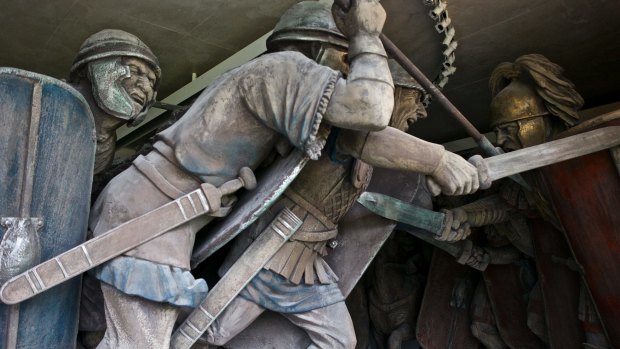
The Roman army and the Gallic tribes battle in a work at the MuseoParc Alesia.
The name Vercingetorix, or Great Warrior King, is a mouthful of spiky syllables. But for the French, drilled from an early age in the melancholy tale of the young Gallic chieftain who made Rome tremble – and paid the ultimate price – it trips off the tongue.
Defeated in 52BC by 12 Roman legions under the command of Julius Caesar, Vercingetorix is remembered in France as a free-spirited resistance hero, a long-locked and mustachioed man of the people, of the land; a kind of premier homme. The ghost of Vercingetorix also haunts the adventures of Asterix, first serialised in 1959 and still going strong. He has become, more than 2000 years after his death, the focus of a debate about French identity – French destiny.
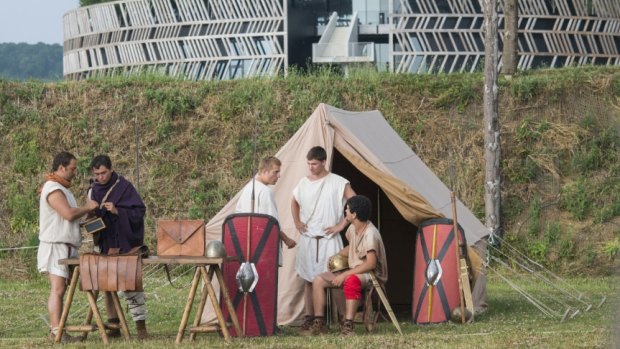
A re-enactment of a Roman encampment.
The dream of a single French origin – a war-like Gallic essence rooted in French soil – plays strongly at this us-and-them moment in French political life provoked by the deaths of more than 200 French nationals in jihadist attacks on the homeland. Not surprisingly, it receives its most powerful articulation on the right, where fear, insecurity and xenophobia are alchemised into a vigorous anti-immigration rhetoric. During his unsuccessful bid for the French Republican party nomination in September last year, former President Nicolas Sarkozy invoked the notion of a non-negotiable Gallic essence. "Once you become French, your ancestors are the Gauls," he trumpeted. "I too adore Asterix, but thankfully France is a much bigger idea than this," countered Labour Minister Myriam El-Khomri.
Vercingetorix was chief of the Averni tribe in what is now the Auvergne region of southern France when Caesar trained his sights on central Gaul. The young chieftain forged a coalition among his famously quarrelsome Gallic neighbours. It was no easy thing. He had some initial success, routing Caesar's forces at Gergovia, near modern-day Clermont-Ferrand, and forcing the Romans into a humiliating retreat. But it all turned bad at the hill town of Alesia, where the Roman siege held firm. Vercingetorix threw down his sword at Caesar's feet and was led away in chains. Never again did he glimpse the forests of his homeland.
On a crisp winter's day last month I visited the "Museoparc" of Alesia – a kind of instructional theme park without rides – dedicated to the memory of Vercingetorix and the Gallic resistance. Alesia was a Gallic stronghold of about 80,000 people – warriors and townsfolk – commanding the heights at nearby Mount Auxois. Around it Caesar erected a fortified ring of connected palisades, and another protective ring beyond that. The museum's circular form and herringbone-patterned wooden cladding were designed by French architect Bernard Tschumi to evoke the concentric circles of the Roman siege machinery. Even without these historical-archaeological references and riffs, it's a handsome structure rising to a viewing platform planted with a ring of trees.
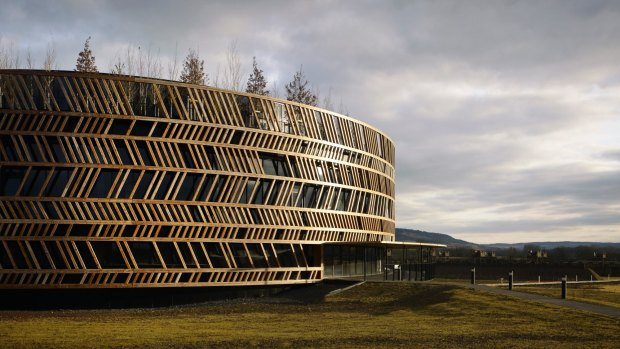
The MuseoParc Alesia.Credit: Christian Richters
Tschumi's building, rising from the plain beneath Mount Auxois on the site of Caesar's camp, was closed for the winter break. But I was shown around by staff and given a solo viewing – without popcorn – of a short film of the battle titled La Reve d'un Roi Nu (The Dream of a Naked King). Offered a choice between a red seat representing the Romans, and blue for the Gauls, I chose the blue.
In the film Swiss-born actor Carlo Brandt, in his 60s, plays the role of Caesar while Frenchman Yann Tregouet – easier by far on the eye than Brandt – is the dashing Vercingetorix. At no time does Tregouet appear naked, despite the film's teasing title, though he does stare mysteriously from the folds of a blue cloak as if posing for a magazine shoot. His comrades are shown in what look like plaid shirts and pyjama tops fighting the exquisitely armored Romans. These, as the museum points out in other exhibits, would have been ordinary folk drafted into the battle; the regular Gallic soldiers wore chain mail and helmets and they fought with iron swords. The Romans so liked the look of the helmets that they ripped off the design and adapted it for their own use.
Caesar is played a little ponderously, though not unsympathetically, in a film that has the virtue of resisting cheap sentimentality and atavistic patriotism. The Gauls are the good guys, but they are not that good.
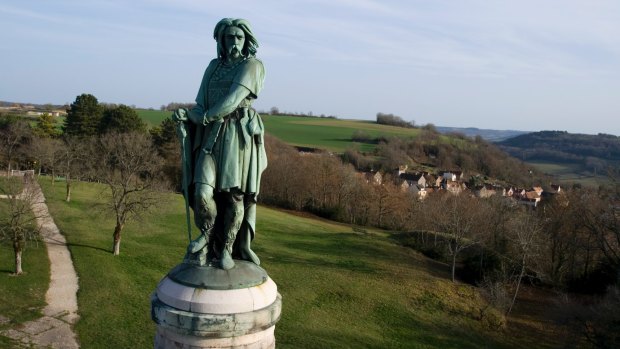
Statue of Vercingetorix at MuseoParc Alesia.
Afterwards I took a drive to the mid-19th-century statue of Vercingetorix atop Mount Auxois. The road coils through the village of Alise-Saint-Reine – pretty drab in winter – before slicing through a bare grove. All of a sudden the forest falls away and a few of Burgundy's rolling hills unfold at the summit. A few miles further east on the Burgundian Cote-d'Or the same kind of landscape produces the world's most coveted wine. Here the soil is richer, better suited to grazing: to a primitive settlement.
Surrounded by patchy snow and ice, beneath a dull marbled sky, Vercingetorix stands on his podium, a little column-like himself. No bold gestures define him; he is held in, restrained. His thick locks billow stiffly as if blown by winds of fate. The points of his magnificent handlebar moustache droop below his chin, giving him the appearance of a '70s rock god. But his attire is unmistakably antique, even if it is a pastiche of the ages: his bound leggings and dagger (the Gauls fought with long slashing swords not daggers) are Merovingian, and the decoration on his tunic is inspired by archaeological discoveries from the earlier Bronze Age. The only real mood spoiler is the copper statue's colour: a gloomy verdigris beneath that January sky.
In an equestrian statue of Vercingetorix at Clermont-Ferrand the Gallic chieftain, fired with derring-do, rides with sword raised over a stricken figure. But that monument celebrates a victory. In the version atop Mount Auxois the Gallic king leans on his sword – a weapon he will soon lay down before Caesar – and peers into the future with a proud, if somewhat pained, expression. This Vercingetorix carries a great burden, one that he seems to bear with forbearance; on his shoulders rest the hopes of France as it imagined it could become in 1865, when the statue was erected by Emperor Louis Napoleon 111. This was five years before the emperor declared war, for no good reason, on Germany. Engraved upon the podium is a quatrain of wildly optimistic phrases:
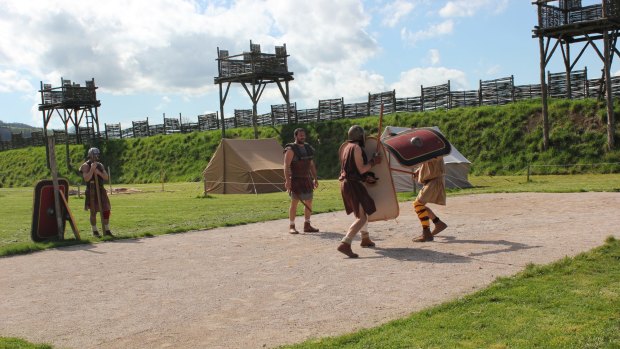
Re-enacting a battle scene at MuseoParc Alesia.
United Gaul
Forming a single nation
With a common spirit
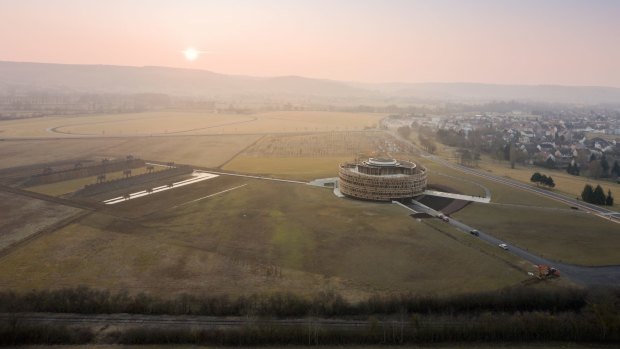
The Museoparc at Alesia is designed to explain what is known about Gallic history,
Can defeat the universe.
Louis Napoleon, as it turned out, was no Bonaparte; he couldn't even read a map. France lost the coming war against Bismarck's Prussia, and it has not fared well militarily ever since.
After his surrender Vercingetorix was brought back to Rome in chains, imprisoned, and either publicly beheaded at Caesar's triumphal parade of 46 BC, or strangled in prison shortly after. Accounts differ. The free-spirited Gaul, in any event, had been bought to heel; a fate Asterix manages to avoid.
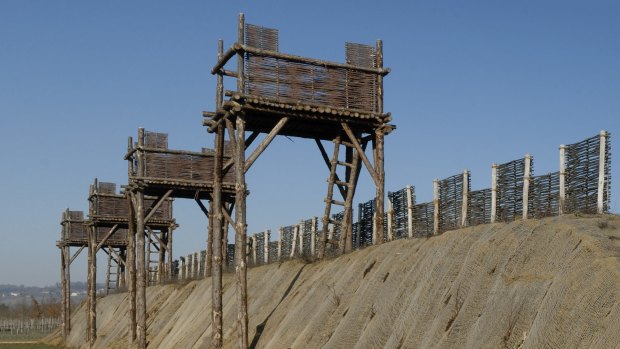
Fortifications at the MuseoParc Alesia.
The Museoparc at Alesia is designed to strike up a dialogue between Vercingetorix, Asterix and archaeology; to explain what is known about Gallic history, and how it is known. In the process it provokes questions about what remains unknown, uncertain and contested, picks legend apart from fact.
Even in France, the Gallic king and his pop cultural alter ego are often confused. But where the Vercingetorix of historical memory is a brooding aristocratic warrior burdened by his defeat, surrender, and death in captivity at Roman hands, scrawny Asterix is a quick-witted mischief-maker unbeaten and unbowed by the Imperium's finest: a Road Runner to the Roman Coyote. Asterix, though, is more than a playful elaboration on, and upending of, the Vercingetorix tale. He is the comical antidote to the tragedy.
Before leaving I send a smartphone photo of Vercingetorix on the summit of Mount Auxois to a friend who had been jealous of my visit. In the subject field I tap: "Le Roi des Gaulois – si triste." Almost immediately her reply pings back: "Mais si beau." She was right. The story of Vercingetorix the Gaul is fixed, in the highly aestheticised French imagination, by physical poetry – by beauty.
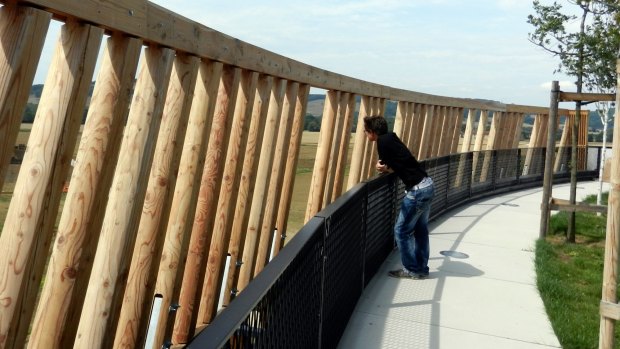
A visitor at the MuseoParc Alesia.
In French artist Lionel Royer's well known late 19th-century painting, Vercingetorix throws down his arms at the feet of Caesar, there is little doubt which party is more pleasing: the sullen, dead-eyed, scarlet-robed Caesar, or the gypsy-like Gallic king, his fine head, viewed in profile, held high as he flings his long sword at the victor's feet.
The French debate about ancestry and identity – Gallic, Frankish and Roman – raises questions about identity without yielding ready answers. Public polemic will always skew to simplicity, but the journey of a race, and a culture, across 2000 years is never straightforward. Did the extraordinary Latin civilisation south of the Alps confer on the French their Latin identity: their expressiveness, vanity, agility and perennial abhorrence of authority? Or did the Gauls? For these are the qualities that Caesar himself identified with the Gallic tribes.
The idea of cosmopolitanism may be Rome's most precious gift to the 21st century – a gift worth defending. The Roman Empire cared chiefly for the maintenance of power and its physical fretwork: roads, cities, bridges and aqueducts. Beyond these material realities it was racially, ethnically, and spiritually agnostic. Rome embraced all races and all gods, and made them her own. Until the day came when the one true god vanquished the rest.
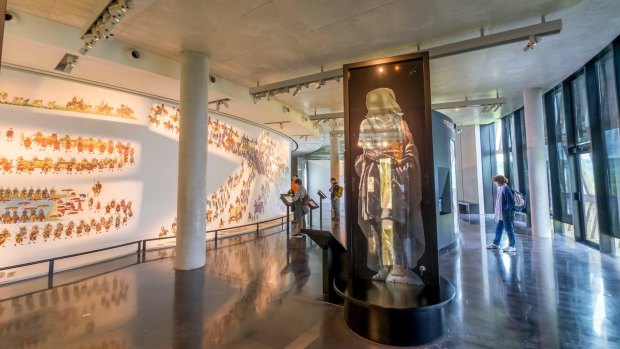
The final battle depicted at the MuseoParc Alesia.Credit: Alamy
I was reminded of this on the train from Burgundy, when I took a seat next to a French-Cameroonian woman named Fridoline: a teacher, as it turned out, in a school for disabled children. She wore a crown of dreadlocks and a well-tailored woollen coat to keep out the cold, and carried three bottles of excellent burgundy bought during vineyard visits. We got talking and I learned something about her life in France. Her French citizenship – her dual identity as a French woman of African birth – is part of a shared, and enduring, yet fragile and threatened, cosmopolitan inheritance. That inheritance is, at root, Roman. And then I considered the contents of her satchel: vinification, another gift from the warm south. My thoughts flew immediately to the cinema at Alesia's Museopark: perhaps I should have chosen the red chair after all.
TRIP NOTES
MORE
STAY
The four-star Oceania Le Jura, Dijon, a characterful mid-19th-century hotel in the centre of town, has been transformed into a modern designer cocoon. oceaniahotels.com/h/hotel-oceania-le-jura-dijon
DO
The MuseoParc Alesia immerses visitors in the Roman conquest of Gaul with artefacts, diorama, films, models, multimedia terminals and reproductions of war machines. alesia.com/english
EAT
Loiseau des Ducs is in the heart of Dijon on a beautiful pedestrian street overlooking the Place de la Liberation. The one Michelin star restaurant in a historic setting offers a full selection of wines by the glass with a focus on those from the region. bernard-loiseau.com
The writer received assistance from Burgundy-Franche-Comte.
Sign up for the Traveller Deals newsletter
Get exclusive travel deals delivered straight to your inbox. Sign up now.